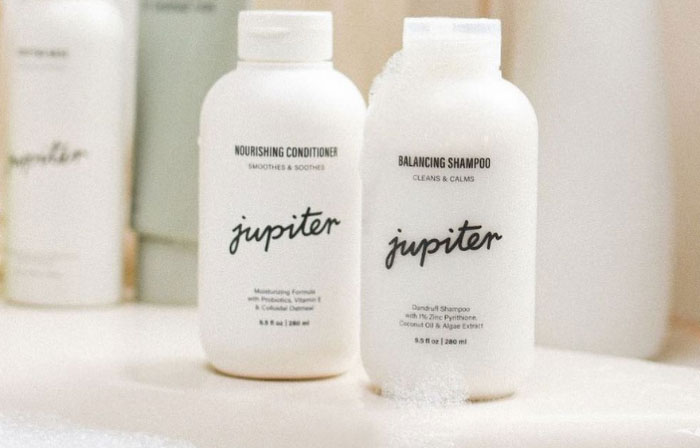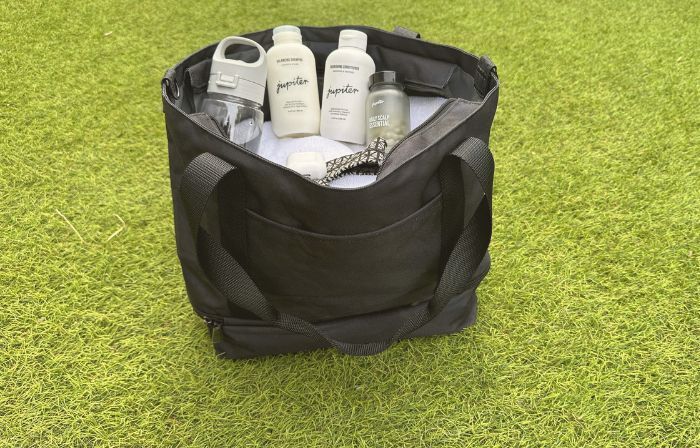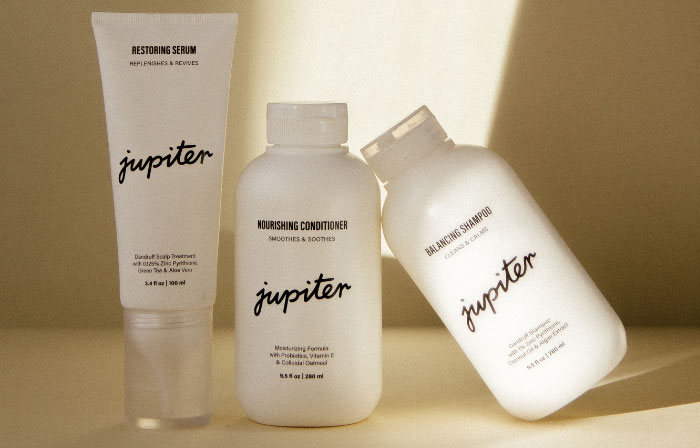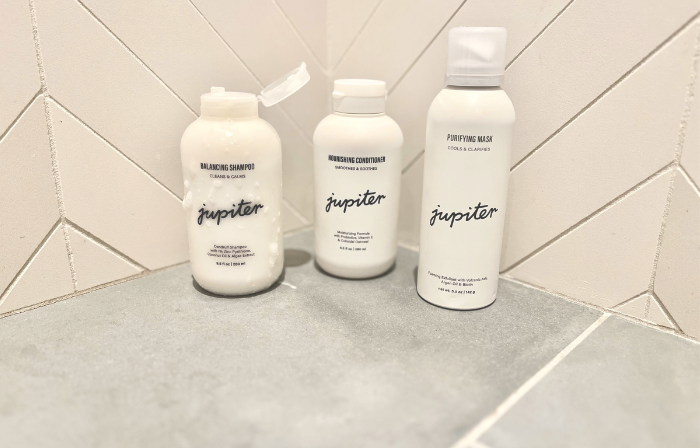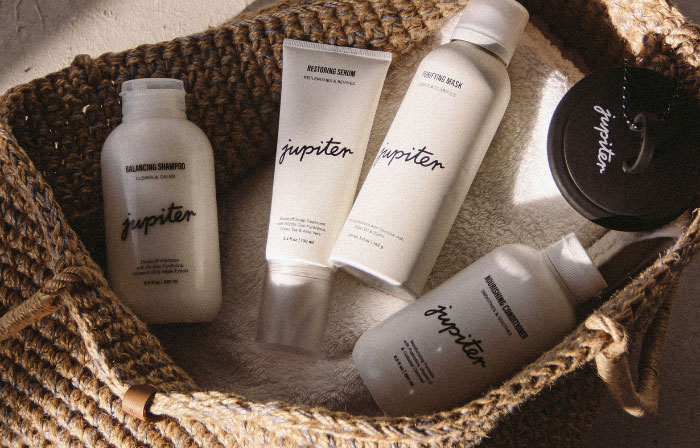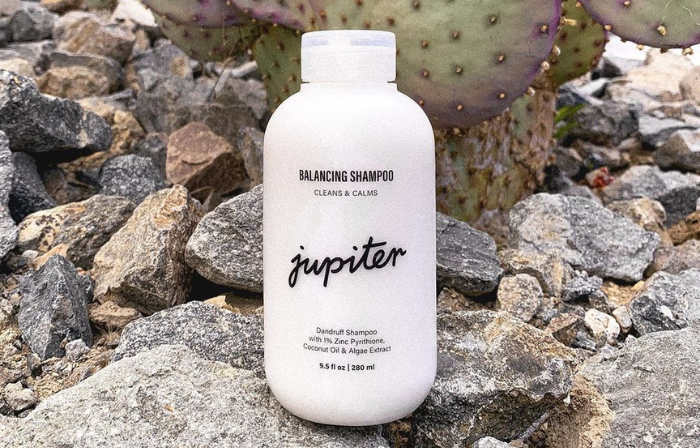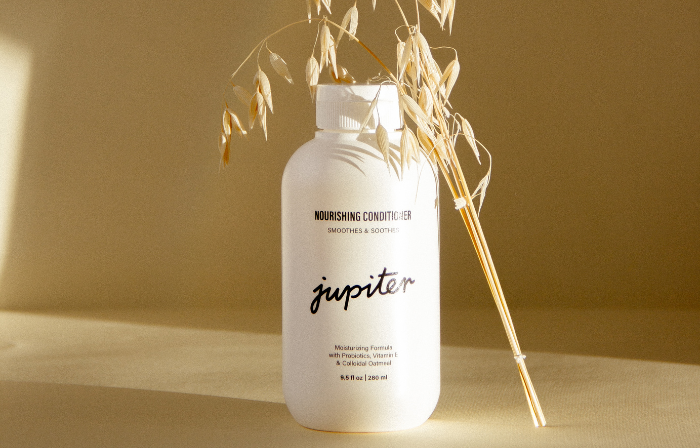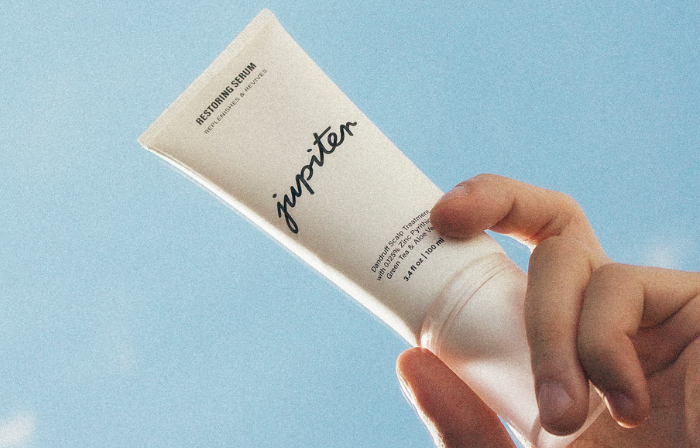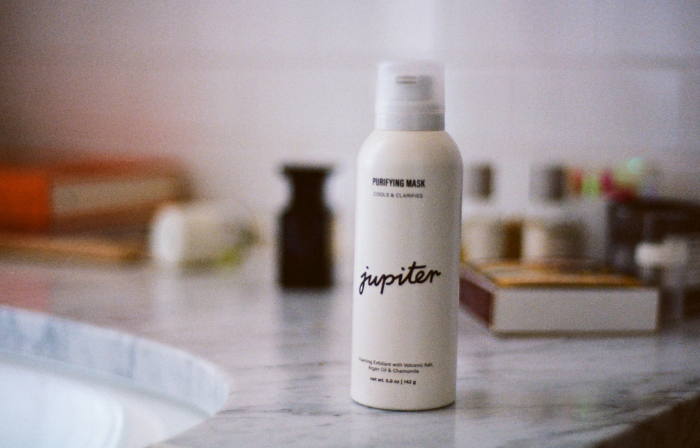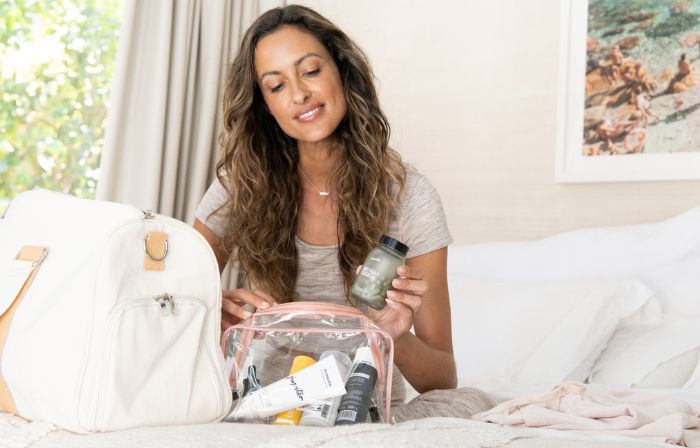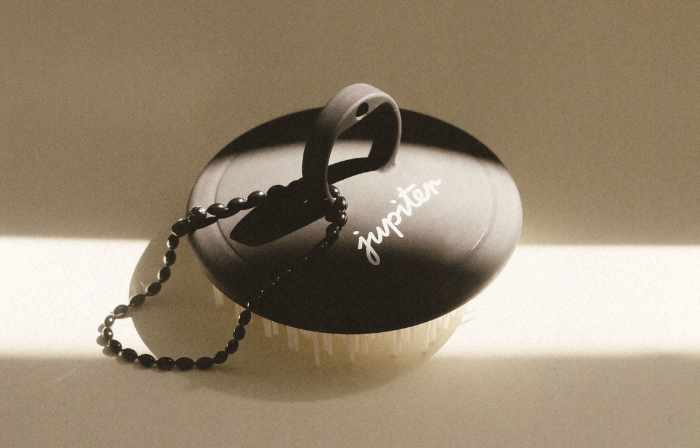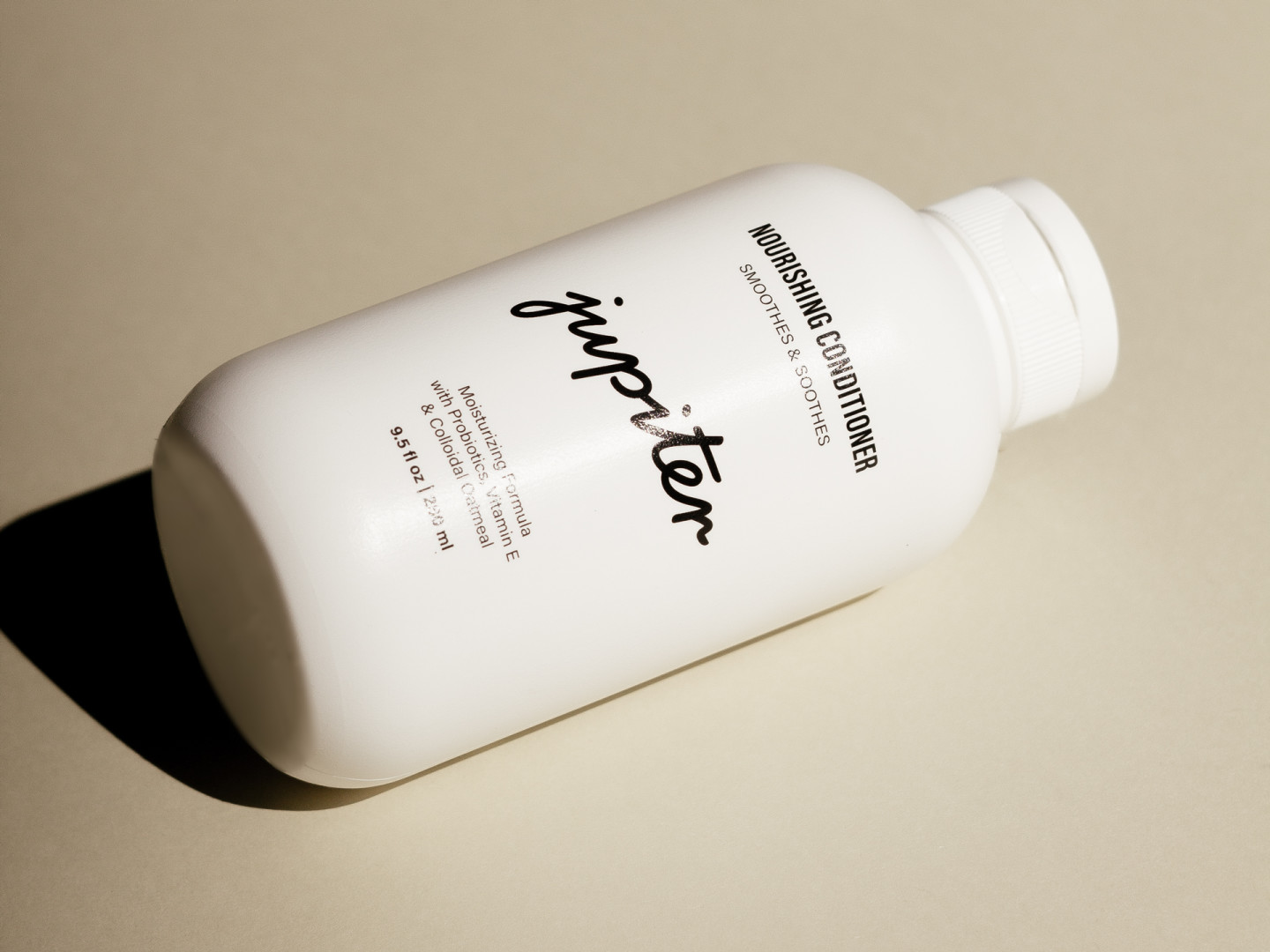🫶🏻 OUR 5% PLEDGE TO HER
#STRONGHERTHANYESTERDAY - WE DONATE 5% TO WOMEN-DRIVEN CHARITIES. LEARN MORE.
In skincare and in hair care, moisture is the name of the game. Finding the right balance between rejuvenating your locks and retaining moisture without looking too greasy is a delicate task and one that many of us have struggled with over the years.
Too much conditioner, and your hair is heavy, flat, and greasy. Too little conditioner, and your hair is dry, brittle, and frizzy.
Sometimes it can feel like you can’t win.
The good news is there’s a lot we know about the moisture our scalp and hair crave and how to achieve it. The bad news is it’s different for everyone. There’s no one size fits all strategy to perfectly condition your hair.
That’s why it’s so important to get to know your unique hair and scalp type so you can build your own routine.
So, how do you build that routine? You start here. Consider this post your guide to figuring out how to give your hair the moisture it craves.
Why Does Conditioning Matter?
Let’s begin with the basics. Why do so many shampoo and conditioner commercials feature waterfalls in the background? The truth is, our scalp’s ability to retain water is a crucial component to the health of our hair. It really does all start at the roots.
When we cleanse our hair, especially with shampoos that feature sulfates, our scalp is stripped of its natural oils. Sebum is the oil produced by the sebaceous glands. These glands are all over our bodies and play an essential role in the health of our skin.
In fact, on our faces alone, it’s estimated that there are 900 sebaceous glands per square centimeter of skin. Sebum is a waxy and oily substance that coats, moisturizes and protects our skin. It’s totally normal and indicative of healthy skin doing what it’s meant to do.
Sometimes when we’re experiencing an imbalance, whether it’s related to acne or dandruff, our glands get confused and overproduce sebum, leading to clogged pores and build-up. Other times, our skin and scalps can be stripped of these oils.
If you’ve ever experienced dry skin or scalp during the winter, after a harsh hair treatment, or just because your shampoo and soap are too aggressive, you’ll know what this is like.
So why is conditioning so important?
When hair follicles are damaged from natural or environmental causes, they produce more fragile hair.
Fragile hair is prone to breakage and split ends, meaning your hair growth is off on the wrong foot right from the start. For luscious, bouncy, and smooth hair, your best bet is to take special care of the amount of moisture your scalp and hair strands are receiving.
What to Consider When Building Your Conditioning Routine
The path to well-moisturized hair looks different for everyone. These are the five variables to consider when building your conditioning routine.
Your Curl Pattern
There’s a lot of diversity when it comes to natural hair types. Everyone’s hair has its own unique quirks, whether it’s tightly coiled curls, stubborn cowlicks, or pin straight hair strands.
Your unique curl pattern is usually a good indicator of how often you need to wash and moisturize your hair, but it can be a little intimidating trying to figure it out.
Your curl pattern is determined by the shape of your hair follicles.
Depending on how they’re shaped, your hair will grow in different patterns. Curl patterns, though many argue that the current system is too reductive, are groupings of four hair types.
Type one describes straight hair.
Types two and three fall somewhere in the middle.
Type four describes tight, coiled curls.
The groups are further divided by A, B, and C categories, which all define how wide the hair strands are.
Your best bet is to consult a curl pattern diagram with real photographic examples to figure out your curl pattern. Compare your natural hair type to the photos and see what looks most like you. Remember that many people, especially those with curly hair, will have different hair types and curl patterns throughout their scalp.
Type four hair will generally require more regular moisturizing, as curly hair is prone to dryness. While on the other end of the spectrum, type one hair will generally require less frequent moisturizing, as the hair can be thin and fall flat with too much-added product.
Your Hair Porosity
Another element that contributes to how often you should moisturize your hair is its unique porosity. This sounds more scientific than it actually is.
Hair porosity simply describes your hair strand’s ability to absorb and retain moisture. If you’ve ever applied a product only to discover your hair sucked it all up and still feels dry, your hair likely has a high porosity, meaning it can absorb the product and also release it just as fast.
If you’ve ever applied a product and still felt it sitting on your hair days later, you probably have low porosity, meaning your hair is prone to build up and can be stubborn about retaining moisture and natural oils.
For most people, porosity is determined by genetics, but it can become more porous over time if you’ve treated your hair with lots of harsh chemicals and dyes.
Thankfully, there is a simple trick to figuring out how porous your hair strands are. After cleaning your hair, dunk a few strands into a cup of water. If your hair sinks quickly, it’s likely higher in porosity. If it floats, it’s likely lower in porosity.
People with high porosity hair should prioritize regular deep conditioning treatments to restore balance to their hair, since it quickly loses moisture. People with low porosity hair should consider clarifying hair treatments that help reduce build-up.
Your Scalp’s Natural Oil Production
We’ve been talking a lot about the size and quality of hair strands, but we’d be remiss not to cover your scalp, which plays an essential role in how often you should moisturize your hair.
Environmental factors can play a big role in the greasiness or dryness of your hair and scalp, but the truth is, our natural sebum production is probably the best indicator of hair and scalp moisture.
Some of us are more prone to an oily scalp, while others are more prone to a dry scalp.
More likely than not, you’ll already know which of these two camps you fall in. If you have an oily scalp, scale back on your moisturizing and conditioning treatments, so you don’t overdo it. If you have a dry scalp, moisturize more often.
Your Hair Treatment History
Though it may get you closer to a look you love, there are indeed fewer worse things you can do for your hair than to bleach it. Chemicals, harsh dyes, and heat treatments make a big impact on the health of our hair.
Have you ever noticed dyed hair looking dryer and more brittle? That’s because it is.
Treated hair is more likely to be damaged and lose its natural barrier, which helps lock in moisture. It can be frizzy, stringy, and stretchy. It’s not just about dyes, either.
People who straighten, curl or blow-dry their hair every day are doing severe damage to the integrity of their hair strands, especially if they’re not using a heat protectant spray.
We know the temptation to do your hair every day can be high, but your hair will thank you if you take some time off. In the meantime, make sure you work in regular deep conditioning treatment to help counteract the effects of the heat and chemicals.
Your Climate and Environment
This one is tough because it’s primarily out of your control. The weather, quality of the air, and the strength of the sun’s rays all play a role in the health and happiness of our scalp, and by effect, our hair.
This is why people are more likely to experience dryness in their hair during the cold winter months. In the summer, we sweat more, and our skin is generally better moisturized because of it.
There are some things you can do to fight the elements when it comes to your hair.
Sleeping with a humidifier to improve the air quality in your bedroom as well as sleeping on a silk pillowcase, can help reduce frizz. Applying sunscreen to your scalp can help protect it from damaging sunburn which can harm your hair follicles impacting the health of your hair.
Even if you just condition your hair more often in the winter and less often in the summer, you’ll be doing yourself a serious service.
Your unique curl pattern is usually a good indicator of how often you need to wash and moisturize your hair...
How to Condition Your Hair Well
Assuming you’ve given yourself a proper hair consultation and know your hair type, the porosity, your scalp’s natural oil production, and you have a hold on your hair care routine and climate, let’s get into the nitty-gritty when it comes to conditioning your hair.
If you can believe it, there is a right and wrong way of doing it. We’ve broken this guide down by product type because the sky's the limit when it comes to conditioning options.
Rinse Out Conditioner
First up is your standard rinse-out conditioner. You should apply this conditioner any time you’re using shampoo to restore moisture to the hair strands after they’ve been cleansed of build-up. This will give your scalp time to produce sebum and restore order. If your hair strands and scalp are especially dry, you may want to consider using conditioner even when you haven’t shampooed.
Conditioners are pretty simple products. They often contain fatty alcohols, humectants, and oils that help restore strength and bounciness to hair strands, leaving them silkier and smoother, not to mention tangle-free.
Some conditioners only focus on the hair strands and should be applied to the ends of your hair rather than the roots. However others, like Jupiter’s Nourishing Conditioner, benefit not only your hair but your scalp as well - soothing rough skin and moisturizing a dry scalp.
A gentle scalp brush can help you disperse conditioner throughout your hair strands without doing too much damage. Wet hair is especially prone to breakage, so you want to be sure you’re gentle with your hair in the shower. After you’ve worked it through the ends, leave it on for a few minutes, then rinse it out with cool water to help your strands retain moisture.
When all else fails, follow the instructions on the bottle.
Leave-In Conditioner
As the name implies, a leave-in conditioner is meant to stay on your hair after a shower.
This is especially good for people with dry and brittle hair strands, so they can reap the rewards of the product hours after the shower ends. It can also be used as a styling tool, giving the hair texture and tack to hold shapes and styles better.
Most leave-in conditioners recommend applying the product to damp hair. Work it through your hair, avoiding the crown of your head, and move the product down to your ends.
Let your hair air dry and avoid brushing while it’s wet. For some people, leave-in conditioners are replacements for rinse-out conditioners, not additives.
Deep Conditioning Masks
Deep conditioning your hair is one of the best ways to give it some serious TLC. If we’re willing to do face masks once a week, why not hair masks?
Deep conditioning hair treatments will further retain moisture on the scalp and leave hair feeling silkier and healthier. They’re especially helpful for people with breakage due to heat damage.
Deep conditioning products can vary when it comes to instructions, so make sure you read the back of the label. Often you’ll need to apply the product to dry hair before you shower, leave it in for about twenty minutes, then wash it out in the shower.
A general rule of thumb is that you shouldn’t do a deep conditioning treatment more than once a week.
Keep Track of Your Hair Journey
As with anything self-care-related, you should treat your relationship with the conditioner as an ongoing process. Depending on the season, the last treatment you did to your hair, and how your scalp reacts to different products, you may need to adjust how often you choose to moisturize.
Pay attention to what happens when you alter your routine. If you experience any of the following, you’re probably moisturizing your hair too often:
Your hair feels greasy to the touch.
Your hair falls flat and lacks volume.
Your hair is excessively shiny or sleek.
Your hair doesn’t respond to heat treatment or styling tools.
On the other hand, if you experience any of the following, you’re not moisturizing your hair enough:
Your hair strands feel dry and brittle.
Your hair strands are easily breaking off.
Your hair easily gets tangled.
Your hair is frizzy.
Your hair is dull and lifeless.
Haircare is a lifelong journey. Finding the right products and routine for you is the most important step in achieving the hair of your dreams.
Remember, not all products are made equal. You should look out for harmful chemicals, dyes, and synthetic fragrances that can potentially do damage to your hair.
Check out our line of clean, scientifically formulated hair care products exclusively focused on scalp care, designed with the help of dermatologists.
Moisturizing Your Hair
Just like your exercise routine, diet, and skincare regimen, finding the right habits for your best head of hair is an ongoing process. You need to prioritize your hair’s health to really see it shine. Don’t get discouraged early on. With regular care and determination, you can start to see those shiny, natural, bouncy locks.
We can help you figure out the right routine for you, take our quiz to discover the proper regimen for your hair and give your scalp what it’s really craving.
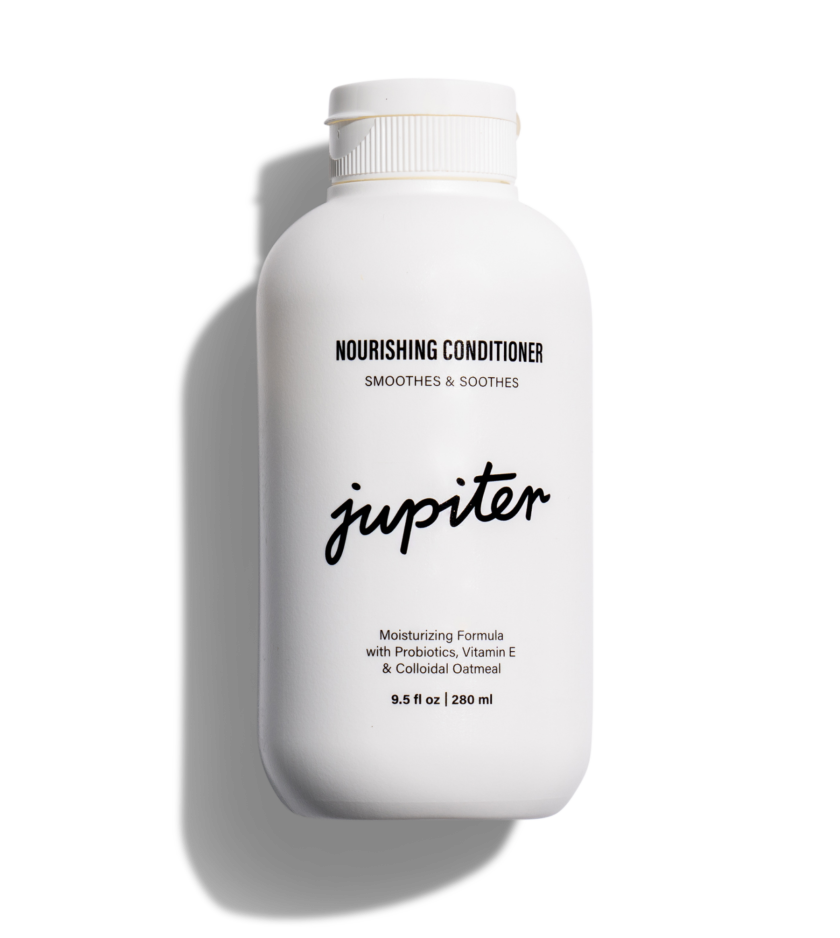
All scalps can use a little TLC. Our daily conditioner is packed with luxe ingredients that’ll leave your hair feeling silky fresh, while working behind the scenes to soothe and moisturize. With notes of mint, vanilla, sage, and lavender, it’s a conditioner not of this world. Use after washing with our Balancing Shampoo.
